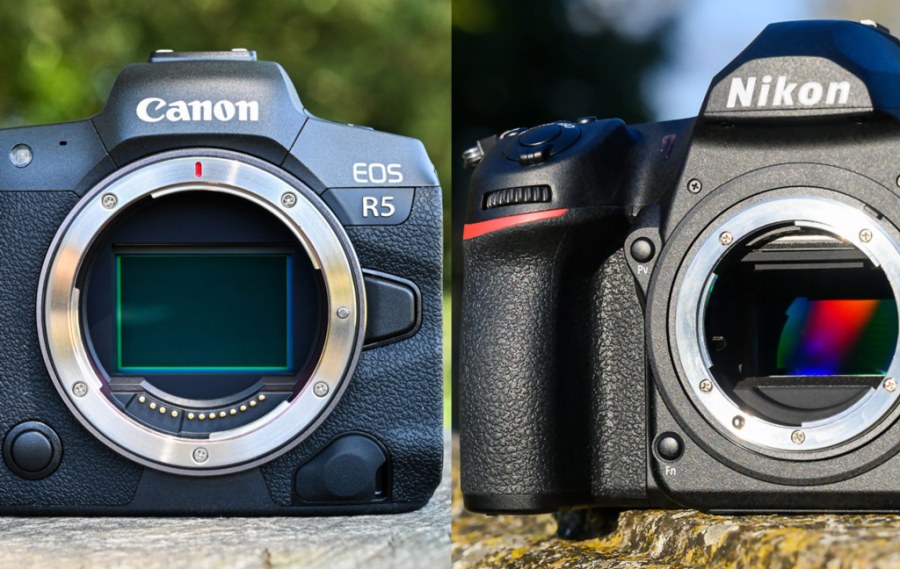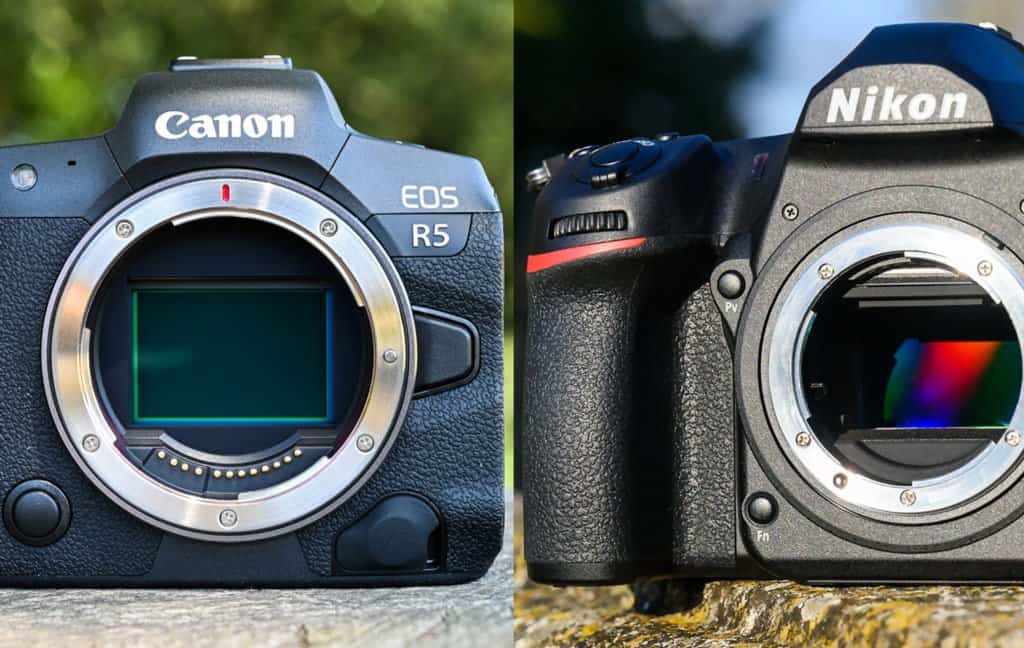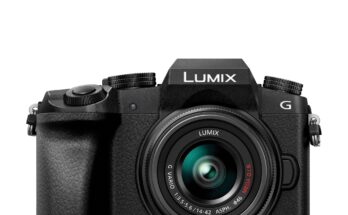Mirrorless cameras often cost more than DSLRs due to their advanced technology and compact design. They also typically include newer features that DSLRs lack.
Mirrorless cameras represent the latest in photographic technology, combining portability with high-quality imaging capabilities. They appeal to both amateurs and professionals by offering features such as faster autofocus, higher frame rates for continuous shooting, and real-time previews of exposure adjustments.
As they contain fewer moving parts than traditional DSLRs, they present a more streamlined, lightweight option that’s ideal for travel and everyday photography. Advances in electronic viewfinder (EVF) technology have also made them competitive with the optical viewfinders of DSLRs, providing clear and accurate representations of what the final image will look like. These innovations and benefits contribute to the higher price point of mirrorless cameras, as the cost reflects the investment in research, development, and implementation of cutting-edge features.
Technological Advancements In Mirrorless Cameras
The digital imaging world has witnessed revolutionary transformations with the advent of mirrorless cameras. These innovative devices blend high-performance characteristics with compact designs, challenging the once-dominant DSLRs. Exceptional image quality, speed, and versatility define the cutting-edge technology integrated into mirrorless systems, which often comes with a premium price tag.
Evolution From Dslr To Mirrorless
The leap from DSLR to mirrorless technology represents a significant shift in camera engineering. Real-time electronic viewfinders, rapid image processors, and lightweight bodies mark a new era of photography. Critical components like advanced sensors and on-sensor phase detection for autofocus are the norm in mirrorless cameras, providing enhanced performance over their DSLR counterparts.
Cutting-edge Features Justifying Higher Costs
- Superior Autofocus: Continuous autofocus capabilities outperform traditional DSLRs, making it easier to capture crisp images quickly.
- In-body Image Stabilization (IBIS): Reduces camera shake enabling clearer, sharper images without a tripod.
- Electronic Viewfinders (EVF): Provides a live preview with exposure simulation, a leap over optical viewfinders.
- Silent Shooting: Offers quiet operation ideal for sensitive environments or wildlife photography.
- 4K Video: High-resolution video recording is standard, a feature not universally available on DSLRs.
Every feature adds to the cost but enriches the user experience, cementing the higher investment in mirrorless technology. Innovations like IBIS and EVF exemplify costly but essential advancements for professional-grade photography and videography.
Manufacturing And Production Costs
Mirrorless cameras often come with higher price tags compared to DSLRs. This is due to the sophisticated technology and craftsmanship involved in their production. Let’s explore why these advanced cameras demand a higher investment.
High Precision Components
Mirrorless cameras require extremely precise components to function astoundingly well. Unlike DSLRs, they rely on electronic viewfinders and cutting-edge autofocus systems. Each part must be crafted to exact specifications. Any slight deviation can affect performance drastically.
- Tighter tolerances for lens mounts ensure superior image quality.
- Dense electronic integration necessitates meticulous assembly.
- Comprehensive quality control checks escalate production costs.
Innovative Sensor Technology Expenses
At the heart of mirrorless technology lies the image sensor. These sensors break new ground in image capturing capabilities. Developing and deploying such advanced sensors is a costly affair.
Here’s what raises the production bill:
| Aspect | Detail |
|---|---|
| Research and Development | Endless hours of R&D push the initial costs high. |
| Material Quality | High-grade materials ensure unmatched sensor performance. |
| Manufacturing Precision | State-of-the-art fabrication techniques are non-negotiable. |
Research And Development Investment
Wonder why mirrorless cameras often come with a heftier price tag than DSLRs? It starts with the investment in research and development (R&D). The push for innovation in mirrorless technology demands significant resources, both in terms of time and money. Companies pour funding into R&D to not only create these sophisticated devices but to also ensure they outperform their predecessors.
Pioneering New Photography Technologies
Mirrorless cameras represent the cutting edge of photographic technology. They eliminate the mirror mechanism found in DSLRs, which allows for a more compact camera body. This innovation requires extensive research to improve image quality, enhance electronic viewfinders, and develop new lens systems that are compatible with mirrorless bodies.
- Development of electronic viewfinders that rival optical counterparts in real-time viewing
- New lens mount systems to couple with shorter flange distances
- Advanced autofocus systems leveraging on-sensor phase detection
Long-term Benefits Of Rd
The investments in R&D extend well beyond the initial release of a camera. A robust R&D department is the lifeblood that keeps camera technology advancing. These investments lead to better products, which translate to higher consumer satisfaction and brand loyalty. Furthermore, they build the foundation for future enhancements, ensuring that cameras can evolve with technological trends.
| Investment Area | Long-Term Benefit |
|---|---|
| Image Sensor Development | Higher image quality, dynamic range, and low-light performance |
| Autofocus Technology | Quicker, more reliable focusing systems |
| Firmware Updates | Extended camera lifespan with new features and improvements |

Credit: m.youtube.com
Market Dynamics And Consumer Demand
Understanding the price point of mirrorless cameras involves diving into market forces. Cutting-edge technology often commands a higher price because it reflects the latest advancements. This market sector significantly revolves around what consumers want and how much they’re willing to pay.
Supply And Demand Influences
Supply and demand shape prices in every market. Mirrorless cameras are no different. The demand for these cameras has spiked due to their compact design and advanced features. Manufacturers are struggling to keep up. This imbalance leads to higher costs.
- High demand for the latest tech increases prices.
- Limited supply raises competition among buyers.
Costs of innovation also contribute. Research and development aren’t cheap. These costs get factored into the final price.
Early Adoption And Premium Pricing
New tech attracts early adopters. These buyers are tech enthusiasts ready to pay a premium. They want the newest, sleekest cameras as soon as they hit the market.
- Early adopters influence market trends.
- Their willingness to pay more sets a high initial price point.
Premium pricing helps recover initial costs. Companies price new models high to offset the expensive production. They account for research, development, and marketing.
Market exclusivity also adds to the cost. New mirrorless models tend to have few rivals. This allows for higher pricing strategies. As tech matures and competitors emerge, prices might adjust.
Rapid innovation keeps mirrorless cameras pricey. Manufacturers upgrade models often. They invest in constant improvements. Buyers pay for these ongoing advancements.
Comparative Analysis With Dslrs
Diving into the camera tech world reveals a key trend: mirrorless cameras often boast higher price tags than DSLRs. This phenomenon stirs up curiosity. Let’s unlock the reasoning by comparing feature sets and assessing the impacts lifecycle and upgrade paths have on the cost of mirrorless cameras relative to their DSLR counterparts.
Feature Set Against Price Points
Mirrorless cameras come packed with advanced features. New tech makes them pricier. Below, let’s explore why these features justify the cost:
- Compact Design: Slim, lightweight bodies demand innovative engineering.
- Electronic Viewfinders: Live exposure preview requires pricey tech.
- Fast Autofocus Systems: Superior autofocus is built on costly sensors.
- Video Capability: Many mirrorless models shoot 4K, increasing the cost.
In comparison, DSLRs often offer similar photo quality for less. But, they might lack some mirrorless innovations.
Lifecycle And Upgrade Paths Impacting Cost
Mirrorless cameras embody the latest technologies. Their innovation cycle is swift. Constant upgrades lead to shorter lifecycles and higher expenses.
| Aspect | Mirrorless Cameras | DSLRs |
|---|---|---|
| Upgrade Frequency | More frequent with new features | Less frequent, established tech |
| Cost of Upgrades | Higher due to cutting-edge tech | Lower, incremental improvements |
Moreover, mirrorless models may become outdated quicker. This creates a premium market for the latest tech.

Credit: www.amazon.com
The Impact Of Branding And Marketing
Branding and marketing play pivotal roles in the pricing of mirrorless cameras. Unlike DSLRs, mirrorless cameras often carry a premium aura. Brands invest heavily to sustain this image. Let’s explore the intricacies of brand positioning and marketing strategies for these high-tech devices.
Brand Positioning Of Mirrorless Cameras
Mirrorless cameras boast a modern edge over traditional DSLRs. They showcase the latest technology. Brands position them as the future of photography. This positioning justifies the higher price tag. Consumers see mirrorless cameras as cutting-edge devices. Thus, they are willing to invest more.
- Emphasis on innovation leads to perceived value.
- Focus on performance and design captivates enthusiasts.
- Luxury appeal attracts a premium audience.
Marketing Strategies Reflecting On Price
Effective marketing strategies shape consumer perception. They directly impact the price of mirrorless cameras. Marketing involves showcasing advancements over DSLRs. It emphasizes superior image quality, speed, and compactness. Campaigns highlight endorsements from professionals. These reinforce the high value—and cost—of mirrorless cameras.
| Strategy | Influence on Price |
|---|---|
| Technology showcases | Boost perceived innovation |
| Celebrity endorsements | Establish credibility |
| Comparative advertising | Highlight advantages |
Looking To The Future
Mirrorless cameras have marked a turning point in photography. Prices have been high. Yet, looking ahead reveals exciting changes. As we look to the future, it’s vital to understand why these innovative cameras carry a heftier price tag. Both technology advancements and user demands shape this landscape.
Projecting Price Trends For Mirrorless Cameras
Experts anticipate a decline in mirrorless camera prices. The reason is simple. Technology becomes more affordable as it matures. Mass production plays a key role. It reduces costs significantly. Competition also drives prices down. More brands entering the market means more options for consumers.
- Advancements in manufacturing lower production costs over time.
- Increase in demand encourages bulk manufacturing.
- Competition among brands creates a price war.
- Improvements in alternative technologies may reduce reliance on costly components.
Potential Shifts In Consumer Preferences
What consumers want matters a lot. Mirrorless cameras are winning hearts. Their features outpace those of DSLRs. Consumers recognize this. We can expect a preference shift. This move can drastically change the market dynamics. Popularity surges can further drive technological innovations.
| Feature | DSLR | Mirrorless |
|---|---|---|
| Weight | Heavier | Lighter |
| Size | Bigger | More Compact |
| Autofocus Speed | Slower | Faster |
| Video Quality | Good | Superior |
Image quality, compactness, and video capabilities pull consumers towards mirrorless options. As these preferences solidify, we’ll likely see more R&D investments. This focus on innovation could balance the cost factor. Cheaper, high-quality mirrorless cameras may soon dominate the market.

Credit: amateurphotographer.com
Frequently Asked Questions On Why Are Mirrorless Cameras More Expensive Than Dslr?
Is Mirrorless Camera More Expensive Than Dslr?
Mirrorless cameras can be more expensive than DSLRs, though prices vary depending on brand and features.
Why Mirrorless Cameras Are So Expensive?
Mirrorless cameras are expensive due to advanced technology, compact designs, high image quality, and cutting-edge features that cater to both professionals and enthusiasts alike.
Do Professional Photographers Use Dslr Or Mirrorless?
Professional photographers use both DSLR and mirrorless cameras depending on their needs. Factors like weight, size, shooting speed, and lens availability influence their choice.
What Are The Disadvantages Of Mirrorless Cameras?
Mirrorless cameras often have shorter battery life and less robust lens selections. They can also suffer from slower autofocus speeds and might exhibit lags in the electronic viewfinder during continuous shooting.
Conclusion
Understanding the higher price point of mirrorless cameras is key for photographers making investment choices. Advanced technology and design innovations command a premium. Still, these cameras offer unique advantages that justify the cost. Balancing budget with desired features will guide your decision in the evolving landscape of photography.
Choose wisely and capture every moment with clarity.



